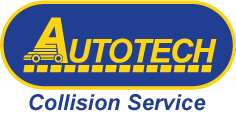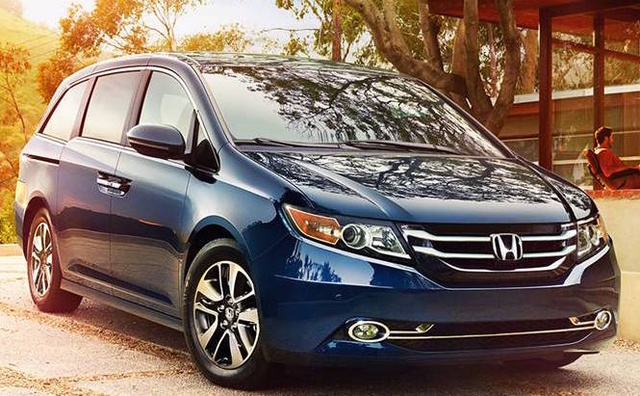If you’ve read any of our blogs, you’ve probably noticed how we always make it a point to highlight the latest collision repair information released by different car manufacturers. Maybe this is the first time you’ve read any of our blogs and are looking for the best place to get your 2017 Odyssey repaired. Whatever the case may be, we at Autotech Collision Service are aware of the specific requirements when repairing a 2017 Honda Odyssey. We know what it means to repair your car the right way because we only listen to what the manufacturer tells us and never begin a repair before looking up what Honda (or any car manufacturer) instructs when repairing their vehicles.
Unfortunately, as you can probably imagine, most body shops will get right to work on a repair and ignore these repair procedures because they trust their “experience” is more important than these guidelines. Here in New Jersey, auto repair technicians aren’t legally required to follow OEM repair procedures. This means you could be driving an unsafe car and you wouldn’t even know it since there ‘appears’ to be no more damage.
We want Sewell drivers to know what Honda requires when repairing the 2017 Odyssey. That way, you know what to look for when you get an estimate back from a body shop. If none of the below procedures are mentioned, then that shop is putting your life at risk. There is no such thing as car repair using the same method anymore.
Significant Changes to the 2017 Odyssey
Although the exterior of the Honda Odyssey hasn’t had much change since 2011, there are significant changes to the structure in the 2017 model that technicians need to be aware of. Many technicians will make these mistakes because they assume since the cars technically look the same, they’ll be repaired the same way they have for the previous model years. However, as we’re about to explain, repairing the 2017 Odyssey is different from how you’d repair any other Odyssey.
For starters, the 2011-2013 Odyssey model was made of 59% High Strength Steel (HSS) and featured Honda’s Ace Body Structure (ABS). Then in 2014, Honda had a whole new generational change in the ABS, increasing the amount of HSS utilized, not to mention integrating aluminum into the vehicle’s structure. The 2017 model has continued to be modified to adapt to these changes and is composed of more high-tensile steel “than ever before.” According to Honda, “…this contributes to higher body rigidity and reduced weight, which directly benefits ride and handling, interior quietness, performance, and efficiency, without compromising crash safety or long-term durability.”
Repairing the Odyssey
Since there are both a repair manual and repair manual supplement available for technicians, they must pay careful attention to any differences the supplement may have from the manual. Honda states, “if the procedure in the supplement different from the original [manual]…that information supersedes the original information. However, if there is no procedure in the supplement, the original procedure applies.”
Aiming and Calibration Requirements
Some of the newer repairs required for vehicles equipped with any form of ADAS technology are alignment, aiming, or calibration. Since this technology is usually a combination of ultrasonic, camera, and/or radar sensors, calibration/aiming is a required procedure any time these vehicles are being repaired. Most shops will ignore any calibration requirements because they assume if there’s no visible damage to any of these systems, then they are functioning the way they should be. However, even one degree can cause total repair failure in these systems.
The 2017 Odyssey comes with a variety of ADAS technology. The forward collision warning and lane departure warning systems use the same upper windshield camera, which means they have specific repair requirements. If either the camera or windshield is removed or replaced (commonly known as R&R) at anytime during the repair process, the camera unit will need an aiming procedure.
Blindspot warning is also available on the 2017 Odyssey. If either the left or right blind spot warning sensors are removed or replaced, Honda requires an alignment procedure. In the rearview passenger mirror, you probably noticed a camera. This is part of the 2017 Odyssey’s lane watch system. This camera will need to be realigned if:
-The camera is removed or replaced
-Door mirror is removed or replaced
-The door panel is repaired
Whether you had your mirrors clipped or were in a minor fender bender, aiming procedures guarantee the cameras are aimed in the right direction so the advances safety systems can perform the way they need to. Without an aiming procedure or calibration of these systems, your safety would be compromised.
Sectioning Requirements on the 2017 Odyssey
The 2017 Odyssey is composed of a combination of materials, which is why a technician must know the different sectioning requirements on your car. You wouldn’t want parts removed off your car that wasn’t supposed to, only to be replaced with inferior-quality aftermarket parts. And yet, many repair shops do precisely that, even on the newest models out on the road complete with all sorts of advanced technology and sophisticated materials. As we mentioned earlier, technicians must look up in the repair manual and repair manual supplement on how and where to repair different areas on your car.
When it comes to repairing the lower rail on the Odyssey, there isn’t a sectioning procedure, but there is a partial part replacement procedure at a factory seam near the cow. The rear rail and rear floor don’t allow sectioning, but there are several partial part replacement at factory seam procedures available.
As you might assume from the name, a partial part procedure is different from a full part replacement procedure or sectioning. However, the average technician will likely go ahead and perform a sectioning procedure since this is how they’d repair the same damaged area on any other car. This is not only illegitimate repair practice, but it is unsafe, and you should only take your vehicle somewhere that follows what Honda has to say.
Who In Sewell Knows How To Repair My 2017 Odyssey The Right Way?
Here at Autotech Collision Service, we know quality repair starts with putting the customer as the priority. This is why we have dedicated ourselves to becoming experts in all things regarding Honda repair and are proud to call ourselves a Honda Certified OEM Shop, located right here in Sewell New Jersey. Not every autobody shop makes the investment to become OEM certified, but we did because we know this is the only way to repair cars nowadays.
We have been proudly serving Southern New Jersey for nearly 30 years and aren’t stopping anytime soon because our customers are our number one priority. We pride ourselves in providing Southern New Jersey drivers with the highest quality OEM repairs because that’s what you deserve out of an auto body repair shop.
If you’d like to schedule an appointment or to get an online quote, click any of the buttons below! Or, feel free to give us a call at (856)-232-1833. We look forward to hearing from you!


